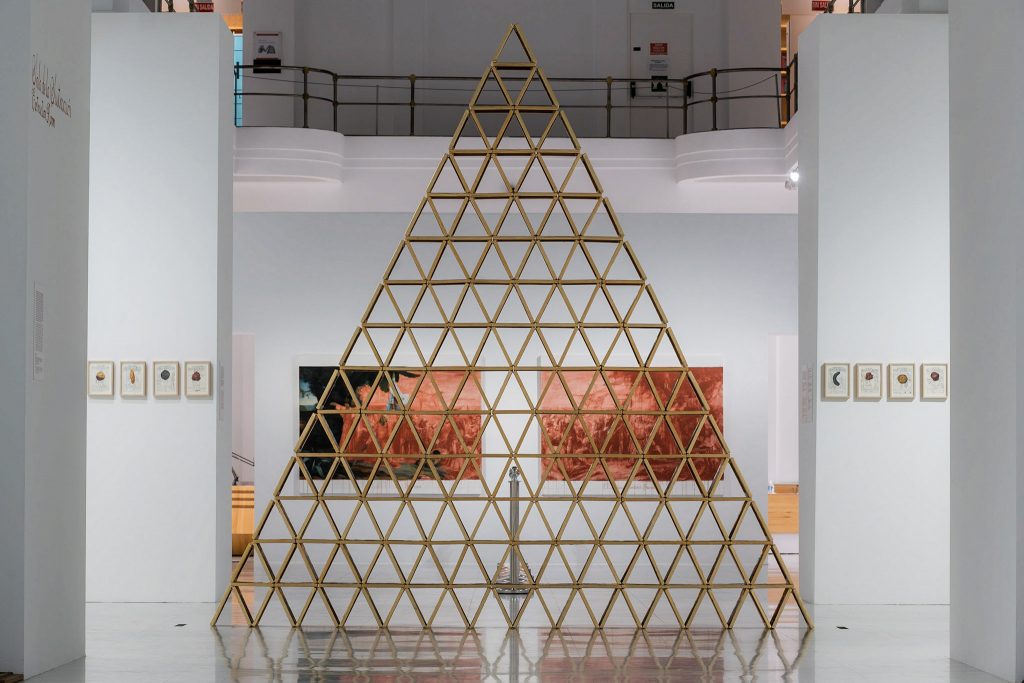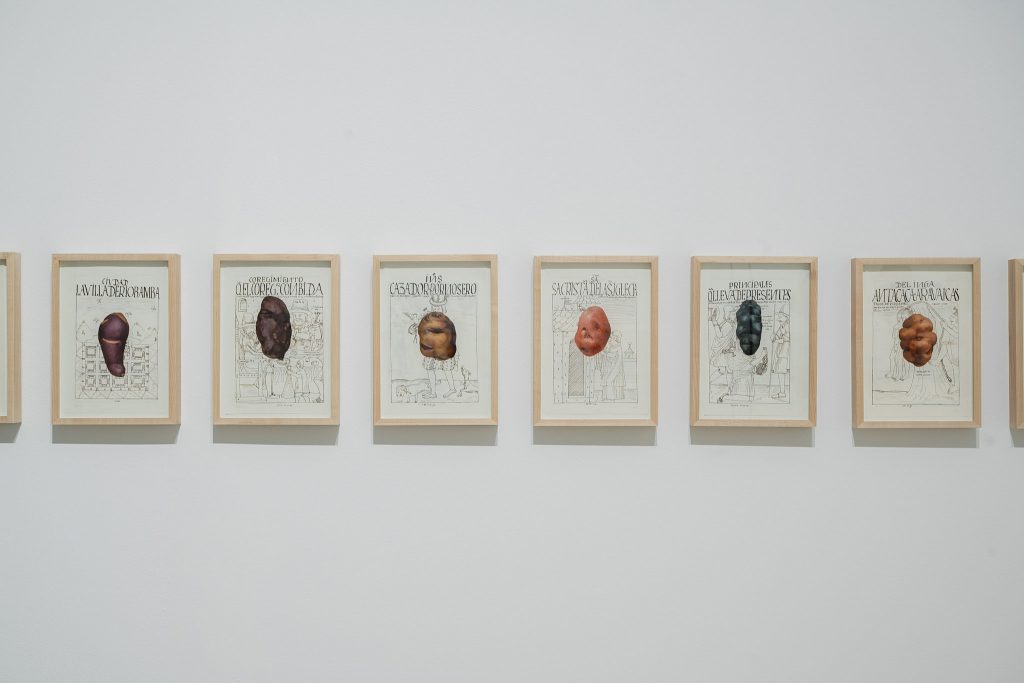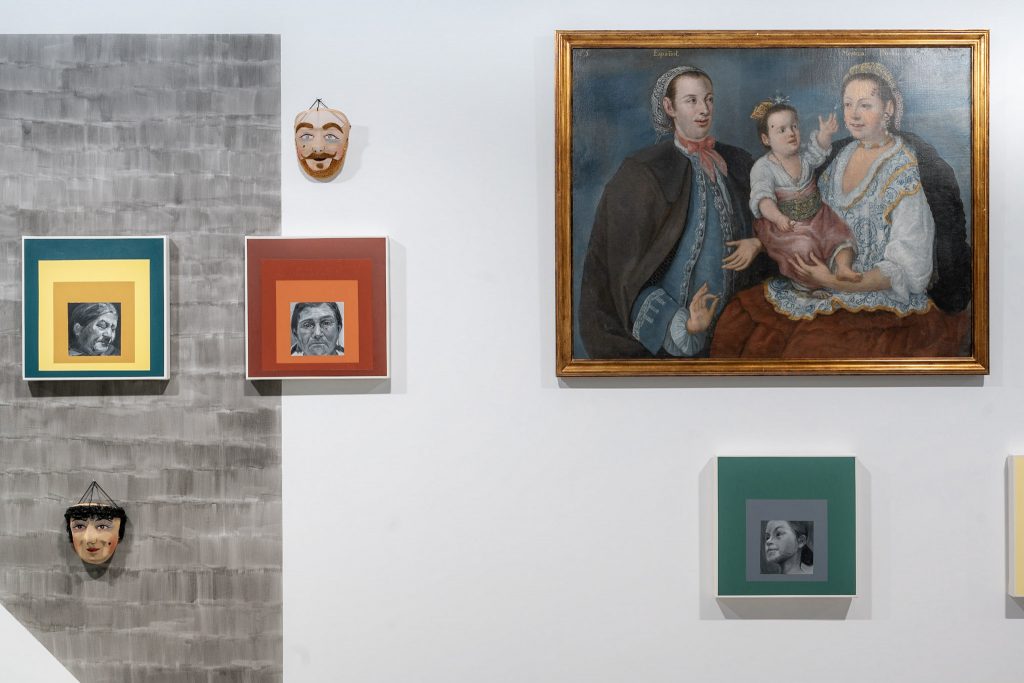BUEN GOBIERNO, SANDRA GAMARRA DISCUSSES THE COLONIAL RELATIONS BETWEEN SPAIN AND SOUTH AMERICA

In Buen Gobierno exhibition, which takes place in Madrid, Spain, at the Sala Alcalá 31, Sandra Gamarra points out how the origin of the Latin American nations is intimately related with the birth of Spain itself, starting from painting as the narrator of history. The title Buen Gobierno comes from the manuscript of the Primera Crónica y Buen Gobierno, written in 1615 by Felipe Guamán Poma de Ayala, which portrays the colonial Andean reality and asks the King of Spain, Felipe III, for a reform of the viceroyalty’s government to save the Andean people from exploitation, disease and racial miscegenation, synonymous of the disappearance of indigenous culture. Curated by Agustín Pérez Rubio, the exhibition remains on view until January 16, 2022.

In Cuando las papas queman [When the Potatoes Burn], a series of 150 varieties of potatoes painted on prints from the illustrations of the treatise by Guamán Poma de Ayala, Sandra Gamarra works with different views about Spanish colonization in the Americas. In this work, the potato, symbol of the commercial relationship between Spain and the South America, represents the erasure of colonial violence. According to the artist, “In Spain, the history of colonial conquest and violence is not told as in the Americas. Here, colonization moved from an imperial context and its sacred inks to a relationship of commercial exchange, where the potato occupies a prime place and its variety and exoticism hide an important and painful part of this shared history”.

The artist believes that repetition is a way to make the viewer retain the idea that is in the image, “When I work in series, I am interested in the repetition of the action, of the saying, I try to make the repetitive action not just mine at the time of executing it, but also from the observer himself. I don’t intend for them to have an image, but the idea that is in the image”, she comments.

The show includes works by other classic and contemporary artists, such as the 18th century series of Los cuadros del mestizaje [the mestizaje pictures], most likely by Cristóbal Lozano, the engraved gourds Sixto Seguil Dorregaray or the masks of La Tunantada de Junin.
For more information access the website.